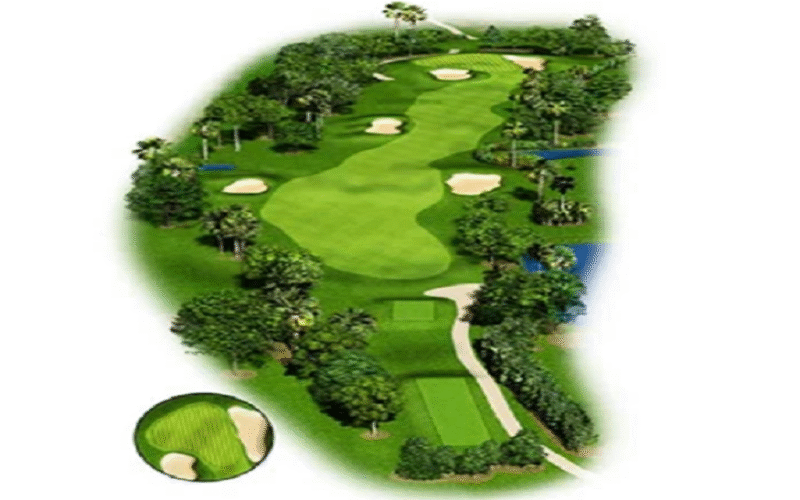The design of a lovely and playable golf course is not just about providing land and creativity; it is about professional quality. A golf course design service should consist of a mix of environmental science, landscape architecture, and player psychology to build the best golf terrains. Golf course professionals will study everything from soil characteristics to slope grades in designing courses to ensure the course provides the right mixture of challenge, safety, and attractiveness. Generally, golf course designs shouldn’t just be utilitarian, as it is always the goal to create golf experiences as well as being respectful of the surroundings, natural landscape, and the merits of sustainability principles.
Key Steps Professional Golf Course Planners Follow for Perfect Design
| Step | Description |
| 1. Site Analysis & Land Survey | Planners analyze terrain, soil, drainage, and existing vegetation to identify opportunities and limitations. |
| 2. Concept Development | Designers sketch course layouts, balancing natural features with strategic playability. |
| 3. Final Design & Implementation | Detailed CAD drawings, 3D models, and grading plans are developed before construction begins. |
Golf course architects follow a systematic approach to turn untouched tracts of land into areas that are enjoyable to play. Each stage, from the analysis of the site to the final visualizations of the project, are predetermined. This systematic method assures course owners and golfers that the finished project will satisfy the intentions of creating a golf course that is appealing in a variety of ways, for owners and golfers alike.
Environmental considerations in golf course development
A coefficient of modern-day golf course design is an emphasis on sustainability. Neighbourhood planners are very active in the protection of the ecosystem to the effective management of water usage and the preservation of native vegetation. Planners utilize green irrigation and planting techniques with an indigenous-type drainage method that almost alleviates maintenance while keeping the golf course lush and green and playable all year.
Balancing factors of playability and aesthetics in the design of a golf course.
A well-designed golf course provides challenge and visual aesthetics. Golf course planners take pride in shaping and designing fairways, greens, and hazards to continue the enjoyment of golf for players longer with superior aesthetics. They take the 3-D visual modeled concept very seriously in all aspects as to what constitutes a unique golf hole whilst maximizing the availability for strategy and visual beauty.
The Function of Technology in Golf Course Design Service
Technology has dramatically impacted golf course design services. With the use of drone mapping, GIS, and 3D rendering, planners can model the player experience and design the layout digitally. This leads to less time planning, greater accuracy, and confidence that each golf course meets quality in design and performance aspects.
The Land Topography Should Be Understood Before Planning
All golf courses begin with the land. As planners begin to develop a golf course, they will analyze contours, elevations and drainage to determine locations for fairways, greens and hazards. All of this information plays a key role in facilitating a smooth and efficient pathway for play, and ensures the golf course will be playable at different times of the year with changing climates.
The Placement of Water Features and Bunkers
Water features and bunkers both add to the difficulty of a golf course as well as the visual character of a course. The planned locations for water features and bunkers should be done so by a professional planner, where the player skill level is tested and not so difficult as to remove enjoyment from the player. Water features and bunkers are also designed for water drainage purposes for effective play, visual assets, and functionality on the golf course.
Planning for Sustainable Irrigation and Drainage
A professional golf course design service will always include the planning for sustainable management of water. Designers create smart irrigation systems along with ecological drainage methods that minimize water use while sustaining healthy turf, in the wish for effective water use throughout the lifespan of the golf course, without compromising the golfing experience.
Developing a Lasting Player Experience
More than aesthetics, planners think about the player’s experience from tee to hole. Each hole is designed for variety, excitement, and strategy. Changes in elevation, views, and naturally supportive backdrops all stimulate the player’s emotional connection to the course, ensuring an unforgettable experience for every golfer.
Frequently Asked Questions
1. What does a golf course design service entail?
The golf course design service process entails site analysis, conceptual planning, 3D modeling, an environmental assessment, grading, and construction drawings. In an overall concept plan, every piece, from fairways to irrigation, is carefully crafted in a way that optimally utilizes space, enables great playability on the course, and retains visual quality.
2. What kind of technology do golf course planners employ?
Golf course planners utilize the latest technology in landscape visualization, such as GIS, drone mapping, and CAD modeling. This allows the planner to develop a detailed design of the landscape in consideration of the site’s topography and land use, and still support the player’s experience on the course.
3. What is the importance of sustainability in golf course planning?
Sustainability means that the golf course is there not only for the player, but is also designed to suit the environmental conditions. This includes using environmentally friendly drainage methods, to using native plants and sustainable systems to reduce water use in the case of irrigation. Sustainability minimizes the environmental footprint an owner may have while enhancing the visual quality of the course and assuring the function of a golf course.
4. How long does it take to design a golf course?
Typically, the planning and design process takes around 6 to 12 months from initiation to implementation, although time frames can vary depending on the complexity of the land, environmental review and approval timelines, and the clients’ need for built elements for the golf course.
5. What makes a golf course design truly great?
A great design combines natural beauty, strategic challenges, and environmental harmony. When executed by expert golf course planners, the result is a visually stunning and playable landscape that appeals to golfers of all skill levels.

